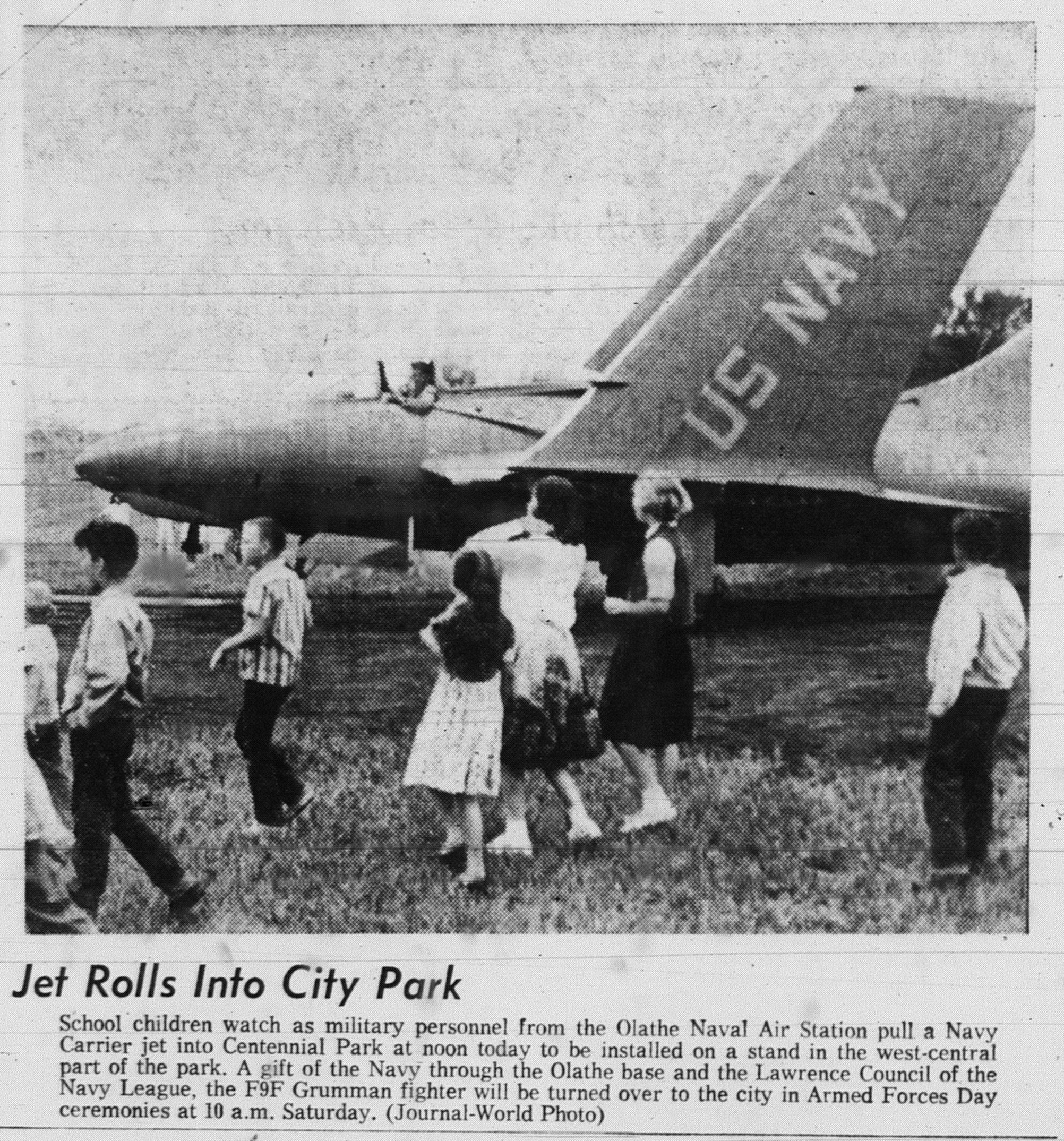“Is that a rocket in your park, or are you just glad to see me?”
Lawrence has its very own Cold War military relic poised to launch from Centennial Park:
The missile that stands in Centennial Park is a Polaris A-1, and it was given to the city by the US Navy in 1964. When it was presented to the public, it was said to be the only Polaris missile display not associated with a military base. To be fair, though, most of the rest at that time were still on nuclear attack submarines. The Navy had only begun working on ballistic missiles in 1956, and the Polaris A-1 was first test fired in 1960. The A-1 was essentially a prototype and the Navy quickly replaced the first model with a more advanced version. Our particular missile was no more than four years old when it was given to Lawrence.
But the missile standing in the park was no test machine. That small section at the very top contained an actual nuclear bomb - a W47 warhead rated at 600 kilotons - 30 times the power of the bombs dropped on Hiroshima and Nagasaki. The Polaris was the first ever SLBM (Submarine Launched Ballistic Missile), a nuclear-tipped short range rocket designed to be placed on submarines that would prowl off the coast of the Soviet Union.
A group known as the Lawrence Navy League officially facilitated the donation, but Captain Richard D. Gruber, a WWII, Korea and Vietnam naval officer, and then-Professor of Naval Sciences of at KU, was instrumental to the process as well. The city erected the missile in its present location on August 13, 1964, and it remains in the same spot today. Despite being little more than a thin metal tube (the skin is about as thick as the sheet metal on a car), the Polaris was filled with concrete before being mounted on four steel beams driven deep into the ground. Although the missile weighed less than a ton when in service, with all that ballast, it now weighs 31,000 pounds.
The missile wasn’t the only weapon the Navy decided to dispose of in Centennial Park: more than a year earlier, an F9F Cougar was brought over from the Olathe Naval Air Station (now the New Century Air Center) and placed on a concrete pad to be a piece of playground equipment for children.
It didn’t fare nearly as well as the missile, though. By 1973, wear and tear and vandalism had made it too dangerous (and here we’re constantly told that kids of that generation never had anything taken away from them in the name of safety). The city junked it and sold it for scrap metal.
The city almost scrapped the missile as well. Twice in the late 90’s the city commission considered tearing it down or giving it away, but both times public outcry saved the Polaris. Then in 2011, the Cosmosphere in Hutchinson came calling, asking if the city would consider donating it to the museum. They were politely rebuffed.
TRIVIA
It’s entirely possible that the Polaris was not the only nuclear missile located inside Lawrence’s city limits. According to the 1983 ABC movie “The Day After”, Lawrence not only had a pair of missiles in the Pinckney neighborhood, but two on campus as well, somewhere below the dorms on Daisy Hill, near the Burge Union:
The movie had people stand on the (now gone) open stairs at the southwest corner of Wescoe because they resembled the ramps at a football stadium. Other actors stood somewhere along the backside of Wescoe for the missile shot, although that view is now somewhat blocked by the Anshutz Science Library.





